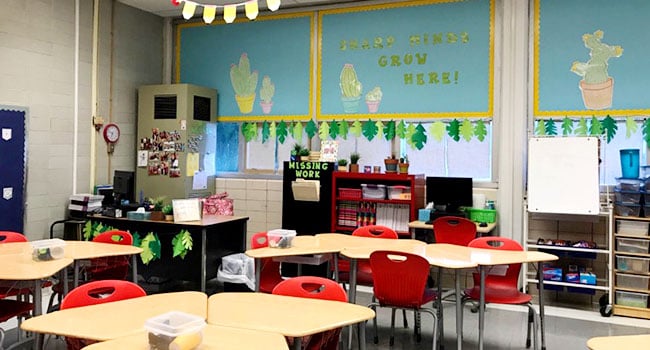
As school curriculums evolve and adapt to technology, learning spaces are following suit. Stuffy, stodgy classrooms don’t reflect or benefit today’s learner. Instead, schools around the country are transforming classrooms to be more engaging, productive and reflective of the growing use of EdTech.
Before you run out of room this year’s budget, consider making space for some room improvements. These five tips are a great place to start.
Considering a space redesign?
- Get students involved. Since students are the primary users of the space, build excitement early by asking them how they want their classroom to look. Instruct them to create an inspiration board in their OneNote Class Notebook with photos and points of interests. On the flipside, create a board that showcases what they don’t like about the current space and how it makes them feel. Keep the students involved throughout the process from inception to completion.
- Ask questions. Think about how the space currently impedes learning. Do desks need to be mobile? How much hands-on help does the teacher need to provide to students? Brainstorm with teachers about their needs and how their ideal space to meet those needs. Figure out how many spaces you first want to start with, then once learning is improved, you can make a case to the higher-ups to continue revamping. Once again, OneNote Staff Notebooks are a great tool to gather everyone’s input and keep them on the same page.
- Get rid of the front of the classrooms. With Chromebooks in front of every student and/or monitors spread about the room, the need to for a front-and-center direct instruction space has passed. Instead, opt for a set up that increases collaboration. Consider classrooms with desks on wheels so workspaces can move into groups or slide closer to monitors.
- Say goodbye to traditional teacher spaces. The use of the cloud has made bulky, traditional storage unnecessary. Ridding your classrooms of these obstacles can free up a tremendous amount of space, just think about how much room a file cabinet takes up. Google and Microsoft both have cloud storage options.
- Inject color into the space. Studies show there is a direct link between color and positive and negative feelings. Color’s impact on emotions can influence how a student studies and learns. Keep wall colors neutral to avoid overstimulation and use bright colors as accents in the chairs, desks and tables. This is also a great opportunity to clear clutter away, leaving clean lines and decongested spaces.
Consider implementing a fresh start to your school’s classrooms this spring. Keep us updated on your progress in the comments below!

